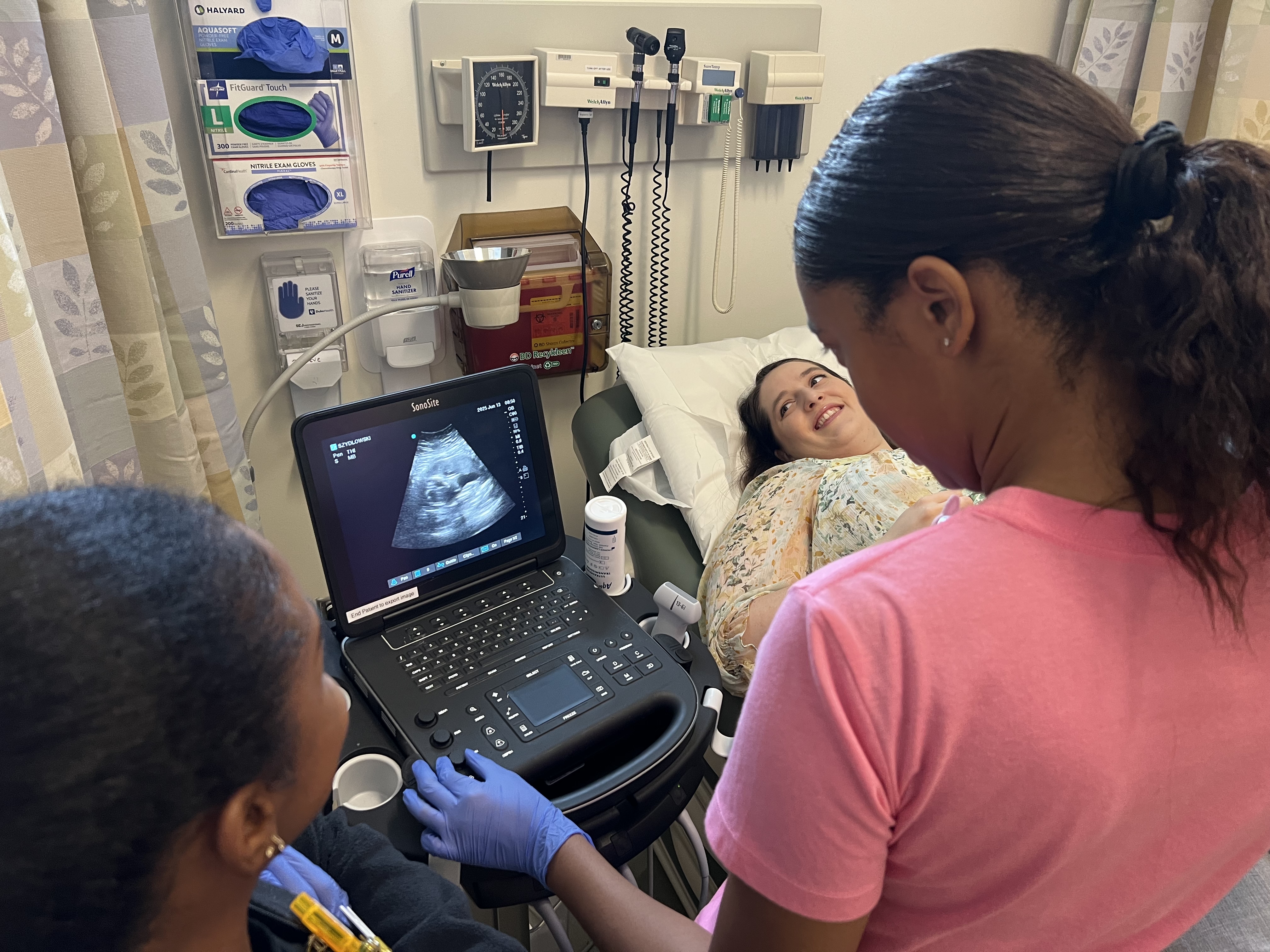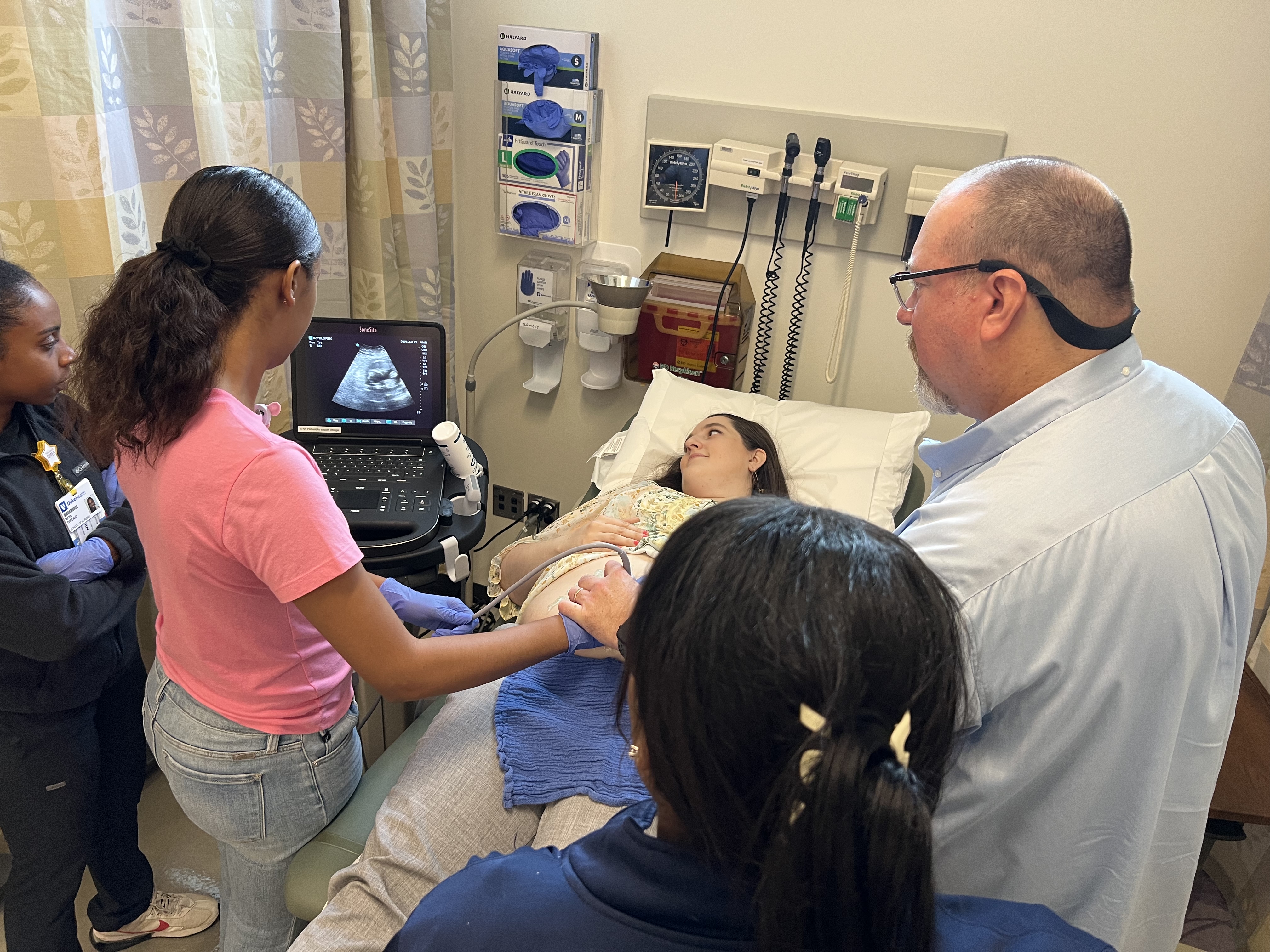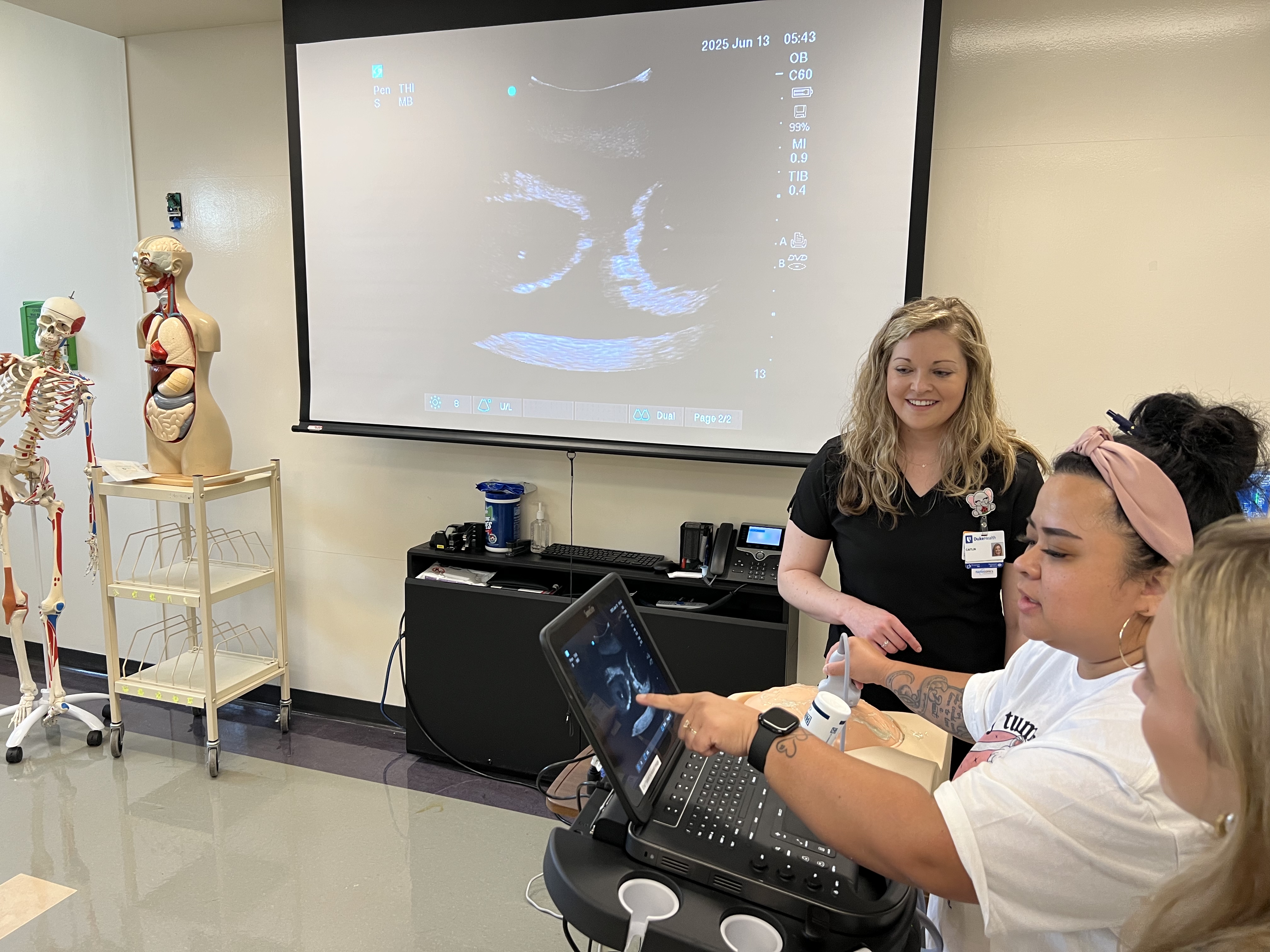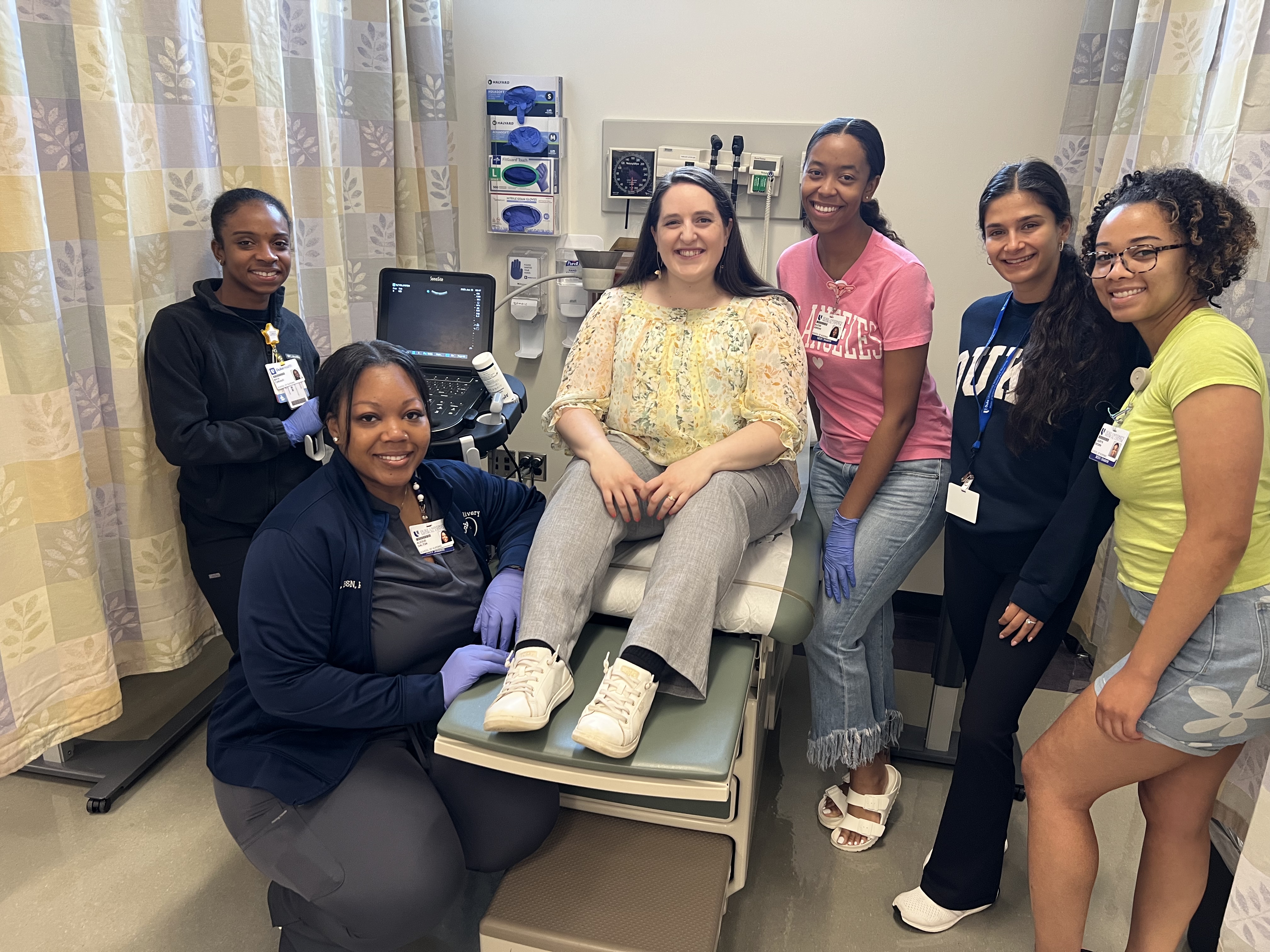Women’s Health Ultrasound Training: A Pregnant Person’s Account
A Duke Nursing staff member gives a personal account of participating as a volunteer pregnant person in the Women’s Health Nurse Practitioner Program’s perinatal ultrasound learning experience.

A Volunteer's Perspective
In June 2025, I volunteered to support the School of Nursing’s Women’s Health Nurse Practitioner MSN students in their perinatal ultrasound learning experience. As the School’s Internal Communications Manager, and with a Duke graduate background in women’s and feminist studies, I love supporting women’s health nursing education. (And I will take any excuse to see my developing baby—free of charge, might I add.)
The School of Nursing is known for its innovative and simulation-based learning techniques, with the Center for Nursing Discovery one of only a handful of simulation programs worldwide to be accredited and endorsed by two international simulation professional organizations.
But this was not a simulation. Rather, this training was the first of two opportunities for students to conduct perinatal ultrasounds on real-life pregnant persons (responders to an open call for volunteers) with a practiced technician guiding students through the basics of manipulating a transducer probe across a pregnant belly and understanding what is shown on the display screen. Students get hands-on experience positioning and angling the probe so that it shows various parts of the uterus and the fetus, finding the placenta, the head, the spine, and the heart.
As a small handful of students gathered around for my ultrasound—for Program Director Kathy Trotter is protective of patient privacy, including in volunteer situations—we all agreed that mine is a very “dancey” baby. It’s part of normal development for fetuses to regularly engage in a number of reflexive movements like kicking, stretching, and pushing as they prepare for life outside the womb, and mine was certainly showing hers off.
“Look at her cute little face!” one student exclaimed. “You’re going to be such a great dancer, sweet girl,” another added. It was moving to witness the students’ excitement getting to see my baby’s development, as well as their genuine respect and appreciation for my own feelings.
Students asked if I knew the baby’s sex or if I’d picked out a name. One student asked about the cultural origins of the name, which was another special moment of personal exchange. I was reminded that a nurse’s job involves caring for the whole person, as a person, and I felt very cared for that day.
Because I have an anterior placenta—which can go a long way in cushioning movement, as the practiced technician explained to the students—I would not have even registered my own Braxton Hicks contractions had they not been pointed out for me on the monitor. (This kind of contraction is a normal part of gestation and simply prepares the body for eventual labor.)
The Student Experience
One student who participated in my ultrasound, Alexis Jordan, has been an RN since 2021, and all of her nursing experience is in labor and delivery. She said that she decided to pursue her WHNP at Duke because she wanted to be more hands-on with reproductive care across the lifespan.
“So many women of all ages have had negative experiences when it comes to receiving obstetrical and gynecological care,” said Jordan. “I want to be able to improve that experience. I chose Duke due to the prestige and the location. I’m an NC native and didn’t want to be too far from home.”
Jordan called her experience in the program so far “amazing” and said that she gained a great deal from the ultrasound training.
“I was surprised at how easy it was to see some things and how difficult it can be to decipher others,” said Jordan. “From this experience I learned that when it comes to ultrasounds you really need practice.”
Another WHNP student, Jocelin Maxwell, who engaged with another volunteer, came to the program with many years of nursing experience across clinical settings, including critical care, neurosciences, and outpatient women’s health.
“I chose to pursue my WHNP MSN because I’ve seen firsthand the impact that knowledgeable, compassionate care can have on women at all stages of life, and I want to be part of that transformation,” said Maxwell. “I chose Duke because I wanted to learn at a school that prioritizes both academic excellence and clinical readiness.”
Maxwell called the ultrasound training “eye-opening,” saying she “felt both eager and a bit nervous.”
“It was amazing to see anatomy come to life on the screen and connect what we’ve learned in class with real-time imaging,” said Maxwell. “A lot of practice is needed to become proficient. I walked away with a deeper appreciation for the role of ultrasound in women’s health diagnostics and care.”
For their second ultrasound training in October, both Maxwell and Jordan hope to build their skills and their confidence, which Dr. Trotter attested is the natural course of learning and the purpose of offering this ultrasound experience twice.
As the training concluded and I grabbed my thank-you gift (a group-signed card and a thoughtful collection of baby items), someone asked for a reminder of when my baby is due. Since we’re expecting her in mid-October, we will see if I’m able to volunteer for Ultrasound Learning Part II!


